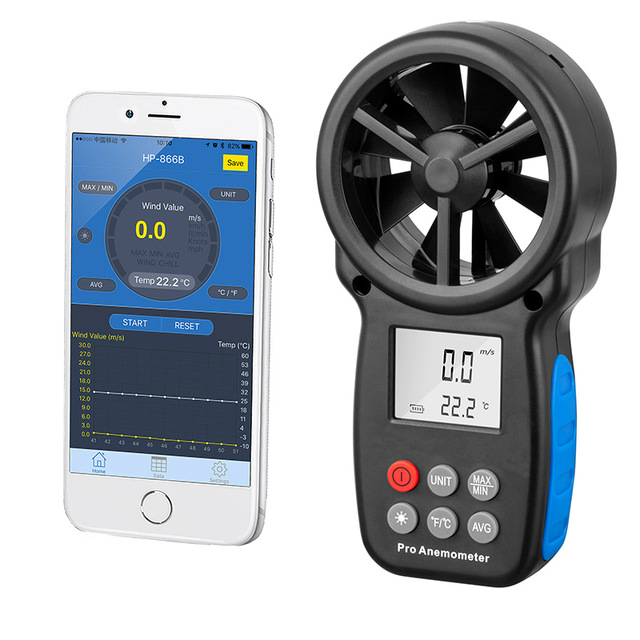Understanding Different Types of Anemometers for Various Applications
Anemometers Unveiled: Understanding Their Significance in Environmental Monitoring and Safety Measures
The function of anemometers in ecological tracking and safety measures is commonly ignored, yet their significance is indisputable. From meteorology to air travel safety, anemometers play a critical function in giving accurate information that informs decision-making procedures and enhances general safety.
History of Anemometers
The advancement of anemometers can be traced back to the old civilizations where fundamental wind measuring gadgets were initial utilized. These very early wind dimension tools laid the structure for the growth of much more advanced anemometers over time. One of the earliest recognized anemometers was the hemispherical mug anemometer invented by Leon Battista Alberti in the 15th century. This style contained four hemispherical cups that accumulated wind power, offering a measurement of its strength based upon the speed of rotation.
Over the years, improvements in innovation led to the growth of even more contemporary anemometers, consisting of ultrasonic anemometers and laser Doppler anemometers, supplying increased precision and effectiveness in gauging wind rate and instructions. The history of anemometers showcases an amazing journey of development and progress in the area of weather forecasting.
Kinds Of Anemometers
Throughout the area of meteorology, different kinds of anemometers have been created to accurately determine wind rate and direction. Sonic anemometers utilize ultrasonic signals to gauge wind rate and direction precisely. Hot-wire anemometers run based on the principle that the cooling impact of wind on a warmed cord is proportional to the wind speed.
Applications in Meteorology
Having talked about the different kinds of anemometers made use of in weather forecasting for measuring wind speed and direction, it is vital to discover their sensible applications in the area. Anemometers play an important function in weather forecasting by supplying real-time and exact information on wind problems (anemometer). Meteorologists utilize anemometers to keep an eye on wind rate and instructions to forecast weather condition patterns, issue cautions for extreme climate occasions like tornados, twisters, and typhoons, and evaluate weather for aeronautics security
In meteorology, anemometers help in recognizing regional and regional wind patterns, which are important for predicting climate adjustments and figuring out climatic trends. These tools are likewise used in research to research microclimates, metropolitan heat islands, and air contamination dispersion. Additionally, anemometers are used in agriculture to optimize plant management techniques, such as irrigation and pesticide application, based upon wind conditions.
Relevance in Air Travel Safety
An redirected here indispensable element of ensuring aeronautics security hinges on the thorough tracking of wind problems utilizing anemometers. Anemometers play a crucial duty in aviation by supplying real-time data on wind rate and instructions, helping pilots in making educated decisions throughout liftoff, landing, and trip. Unpredictable and solid winds can significantly impact airplane procedures, making it necessary for aviation authorities to depend on exact wind measurements to make sure the safety and security of passengers and team.

In the vibrant environment of air travel, where also minor modifications in wind rate and direction can have extensive results, anemometers stand as important devices for promoting risk-free and safe and secure air travel.
Function in Environmental Research Study
How do anemometers add to improvements in environmental research? Anemometers play a critical role in environmental research study by giving important information on wind rate and instructions. This information is important for comprehending numerous climatic procedures, such as air pollution dispersion, weather condition patterns, and environment adjustment. By properly measuring wind qualities, anemometers assist scientists evaluate the motion of toxins airborne, analyze the impact of industrial emissions, and forecast the spread of impurities in the environment.


Verdict
In verdict, anemometers have actually played a vital function in environmental tracking and safety steps. With a rich background and numerous kinds offered, these devices have been extensively made directory use of in weather forecasting, air travel safety, and environmental study. Comprehending the importance of anemometers is vital for accurately gauging wind rate and direction, which is vital for forecasting weather condition patterns, guaranteeing safe aeronautics procedures, and conducting ecological research studies - anemometer. Their contributions to these areas can not be undervalued.
One of the earliest recognized anemometers was the hemispherical mug anemometer created by Leon Battista Alberti in the 15th century. Over the years, advancements in innovation led to the growth of more modern-day anemometers, including ultrasonic anemometers and laser Doppler anemometers, using increased precision and performance in measuring see this here wind rate and instructions. Hot-wire anemometers operate based on the principle that the cooling result of wind on a heated cable is symmetrical to the wind speed. Meteorologists utilize anemometers to check wind speed and direction to forecast weather patterns, issue warnings for extreme climate events like hurricanes, hurricanes, and storms, and assess atmospheric conditions for air travel security.
Recognizing the significance of anemometers is important for precisely determining wind rate and instructions, which is essential for forecasting climate patterns, ensuring safe aviation operations, and conducting environmental studies. (anemometer)